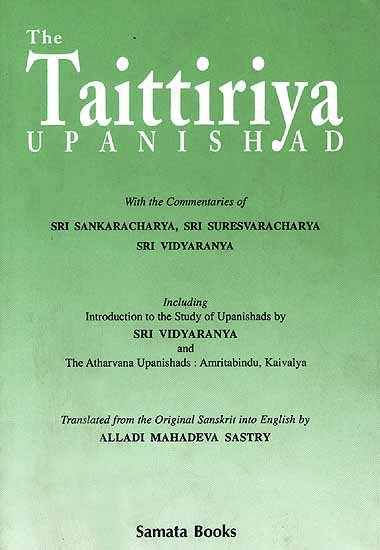Taittiriya Upanishad Bhashya Vartika
by R. Balasubramanian | 151,292 words | ISBN-10: 8185208115 | ISBN-13: 9788185208114
The English translation of Sureshvara’s Taittiriya Vartika, which is a commentary on Shankara’s Bhashya on the Taittiriya Upanishad. Taittiriya Vartika contains a further explanation of the words of Shankara-Acharya, the famous commentator who wrote many texts belonging to Advaita-Vedanta. Sureshvaracharya was his direct disciple and lived in the 9...
Verse 2.108
Sanskrit text and transliteration:
तमोरजोविनिर्मुक्ततद्वृत्त्या चोपलभ्यते ।
ब्रह्मातो निहितं बुद्धौ मनसैवेति च श्रुतिः ॥ १०८ ॥
tamorajovinirmuktatadvṛttyā copalabhyate |
brahmāto nihitaṃ buddhau manasaiveti ca śrutiḥ || 108 ||
English translation of verse 2.108:
Brahman is known through the mental mode which is free from tamas and rajas. Hence, it is located in the intellect. Śruti also says: “Through the mind alone (it is to be realized).”
Notes:
The intellect arises out of the sattva phase of the pure elements. Brahman is comprehended through the akhaṇḍākāra-buddhi-vṛtti. While the content of the ordinary mental mode through which we cognize an object, e.g., a pot, is finite and related, the content of the akhaṇḍākāra-buddhi-vṛtti is a unitary and unrelated one, viz., Brahman which is pure and simple, homogeneous and partless. It is in this sense that we have to understand the Bṛhadāraṇyaka text (IV, iv, 19) which says: “Through the mind alone it is to be realized (manasaiva anudraṣṭavyam). The same idea is conveyed by the Kaṭha Upaniṣad (II, i, 11) when it says: “This (Brahman) is to be attained through the mind” (manasaivedam āptavyam).
Brahman is said to be located in the intellect for two reasons: (1) Brahman-consciousness is reflected in the intellect. (2) It is known through the intellect.
